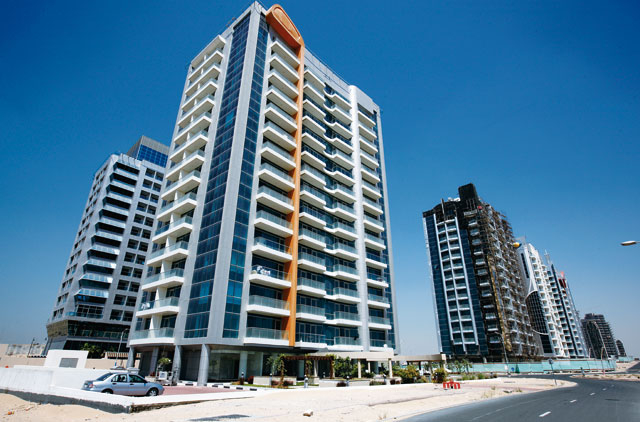Dubai: Those Dubai residents scouting for rentals easy on their pockets should check out Jumeirah Village Circle or Sports City – but they shouldn’t wait on it for too long. Both residential clusters recorded slight rental increases - by 2 and 3 per cent respectively during the third quarter even as other locations in the city have remained stable or gone through declines.
“We are seeing a definite shift to more affordable areas such as Jumeirah Village and Dubai Sports City where rents are cheaper and an increasing number of amenities are coming on-line as communities reach critical mass,” said John Stevens, Managing Director of Asteco.
In contrast, upscale Downtown was one location to see a rent decline – by 5 per cent – during the 12 months to Q3-16, while outside of freehold, the villas in Jumeirah and Umm Suqiem were impacted with year-on-year drops of 19 and 12 per cent, respectively. The posh neighbourhoods were undone by a mix of new supply coming up and higher incidence of job-related uncertainties among its former residents.
“Given that tenants have a wide range of options to choose from, they are more likely to negotiate with their landlord; and if their requirements are not met, they will vacate,” said Stevens. “While this was noticeable in Jumeirah and Umm Suqeim, this trend has spread throughout the wider Dubai market.
“With more handovers expected in the next few months, we anticipate villa rental rates could come under further pressure.”
Another report on the Dubai residential market trends, this one by Cluttons, also confirms the rental stability taking root in the majority of prime residential neighbourhoods. “Apartment rents were unchanged in Q3 across all the submarkets we monitor, hinting perhaps that this segment of the market may be starting to flatten out,” the report adds.
“Following a sharp 4.4 per cent fall in average rents across the city’s freehold areas in Q2, which was the strongest decrease recorded in five years, the rate of decline moderated to -1.5 per cent in Q3. The latest change leaves average rents 8 per cent down on this time last year.”
In these circumstances, it would take a rush of new residential supply to make any sort of dent in rents across Dubai. Cluttons estimates that 34,000 new homes were announced across various projects this year. But total handovers this year from earlier announced projects would only number about 8,300 units.
“We now expect 2017 to see 12,212 units complete, with 20,915 completions in 2018, up from our earlier estimate of 20,600, due to recent announcements,” the report says. “As has been the case historically, while the number of project announcements is progressing at an uninterrupted pace, the delivery timelines of these new schemes remain unclear.
“Our experience has shown that larger developments are often phased, with handovers being stretched over a period of months, if not longer. With this in mind, we have limited our supply database to schemes where sales have commenced, ground has been broken, or the developer has announced development phases.”
Two emerging locations would be Dubai Creek Harbour – where with The Tower (the next tallest skyscraper in the making) launch additional projects can be expected – and Dubai South, now confirmed in popular perceptions as the next big affordable location in the city.
According to Murray Strang, Head of Cluttons Dubai, “If supply continues to increase in the next 12 to 18 months, as the global economy remains unstable, it is likely to cause the current stability and projected bottoming out of the real estate market to unravel, with further price falls likely to follow suit.
“Demand and supply are almost in-sync currently, but this delicate balance can quickly be upset by a supply surge.”












